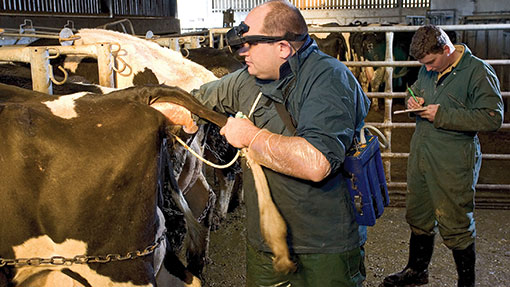Ask the vet: How to prevent calves suffocating in the amniotic sac

Paul Horwood is a a senior veterinary surgeon at Westpoint Vets, Ashford practice explains why calves can suffocate in amniotic sac and advises how to avoid it.
We have beef suckler cows and have had a long-standing problem with calves being born in the bag – they seem very tough to break.
I helped one calf last night and couldn’t break the bag with my fingernails or the calves teeth.
We have lost a few in the last few years owing to this because if I am not there and the cow doesn’t get straight up and pull it off they just suffocate.
Calving is separated into three phases, with phase one being the dilation of the cervix, and changes in her behaviour such as separating off from the group, phase two is the actual calving and phase three is the expulsion of the placenta.
During phase two there is a rupture of the allanto-chorion (water bag) and then the calf, surrounded by the amniotic sac, is pushed through the cervix and vulva due to the contractions of the abdominal muscles.
Usually this forceful expulsion will tear the amniotic sac, and the mother will often lick the calf as well after birth to remove any remnants.
Occasionally there can still be part of the sac left over the muzzle of the calf and if not removed quickly by the mother (or herdsman), then this will result in asphyxiation.
In this case it appears to be more than an individual animal problem with many calves being born with extremely tough amniotic sacs.
The sac should be easily torn with your finger, and you describe a situation that is both abnormal and uncommon.
Selenium has been implicated in over-tough amniotic sacs and it would be worth testing the herd to identify trace element issues. This can be done though a simple blood test and should confirm if this is the cause of your problem.
Advice given is based on the information provided and can’t necessarily apply to situations where other factors exist. If the advice required relates to a specific animal or disease problem the reader should to contact their own vet or advisor with appropriate knowledge of the particular circumstances that they face.
| Ask the Vet is a regular feature where readers’ questions are answered by vets at Westpoint Veterinary Group. |
|---|
